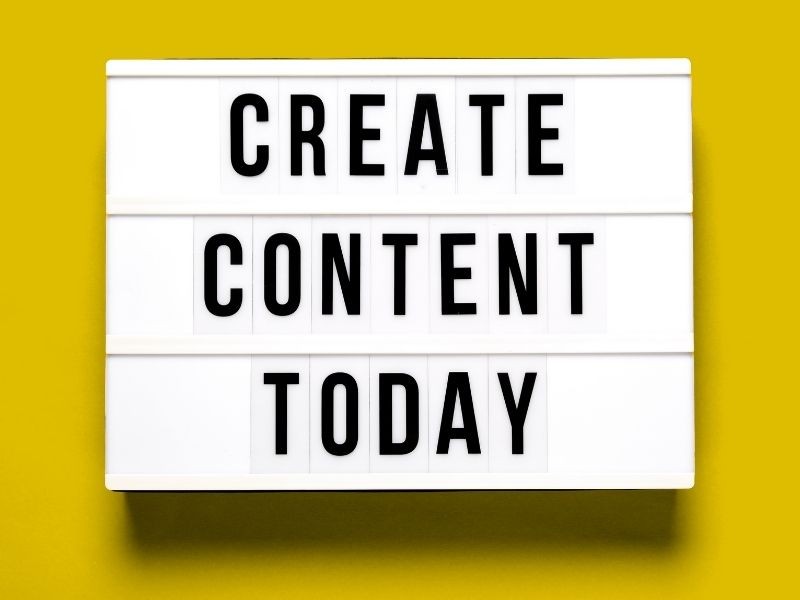
Today, many businesses need a better website, and it is the basis of their business. You know that when you search for something on search engines, be it a restaurant or a hair salon, you will browse their web and thus create your own opinion. Likewise, others create their own image of you. So, how do you make a good impression and develop a simple but attractive and functional website?
Everything is digital, and digital is everything.
Without a website, people don't see you and have no idea what you have to offer. Especially if you provide services or similar.
Here's an example - you decided to buy wallpaper for your home/room/office. You will likely spend two or three days visiting photo wallpaper shops with a tape measure and a ruler in hand. You won't.
You will go to the Internet to search for what is on offer. When you find something you like, you'll put it in your cart, pay, and wait for delivery. Extremely simple.
If those stores that sell wallpaper didn't have a webshop or a delivery option, you would definitely visit the locations with a meter in your hand.
The same goes for you; if you don't have a website, chances are people won't even know you exist. A website is your digital storefront, no matter what you do.
And that storefront is visible 24 hours a day, 7 days a week, 365 days a year.
First impression is also everything.
Your website is the first thing people see and form their first impression of you.
If you thought, "Oh, how irrelevant" - here is a fact for you - people are visual creatures and it takes them about 0.05 seconds to decide whether they like your website or not.
Yes - do they "like" it!
For comparison, the average blink lasts between 0.1 and 0.4 seconds.
That's why, guided by these statistics, you should also know that the design of your site, the first impression, and the visual impression are fundamental.
If your website looks outdated or is slow or difficult to navigate - that same visual creature will quickly give up.
A good website should be "clean", modern and easy to use.
We also found that 57% of people would not recommend a business with a bad website.
So if that tells you anything...

It goes without saying - you want to present your business or trade in the best possible light.
So whether you are a small, medium or large company, a website, in addition to being your mirror, is also an excellent tool. The website is not just there to "just be"; it exists to reach your target audience, to build trust with that audience and ultimately - your website is a great tool for sales.
So, what does it take to develop a website that will eventually be a great tool?
Care should be taken when developing a website so visitors can quickly find what they are searching for, be it contact information or one of your services or products.
75% of people will "judge" you if you didn't pay attention to these details when developing your website... What would it mean if they found a product for themselves but couldn't click "learn more" or "add to cart" next to it (optimally, both would be next to each other)?
Is there anything better than good content - when you search for some information and find precisely what you need. Likewise, if people who come to your website find out who you are and what you are, and you also transparently offer them exactly what they need... That's it.
When developing a website, in addition to paying attention to keywords specific to your niche, you need engaging content.
The content on your website should be aimed at your target audience. Think carefully about what content they would be interested in, something they would click on and read.
Also, keep in mind that the average CTR is 4.23%. (CTR = Clickthrough Rate – how many people click on your content compared to impressions).
SEO is the basis of your every business. Optimise for those looking for you - where they are looking for you.
And they are looking for you on Google (92-95% of searches, depending on the sources), Bing, Yahoo and the few remaining ones.
It sounds complicated. And it is. But if you do it right, SEO helps your website rank better on Google. This means - using keywords and creating quality content from the beginning of website development.
More and more people are searching through mobile devices. And that's why website development includes a version adapted for mobile devices. This means it should look good and be easy to use even on smaller screens.
Even over 85% of users think that the website's mobile version should be equal to the desktop version and even better. Better means more straightforward, more intuitive and faster.
According to the latest data published by Statista, over 60% of global e-commerce takes place on mobile devices.
As we have already mentioned, in that short split second in which you didn't even blink, and the user has already decided whether to stay on your website or not - you must be pleasing to the eye.
Website development also implies a perfect fit with your brand's visual identity - your logo, company colours and typography.
And, of course, quality photos and videos improve the entire experience, and continuity in design builds recognition.
You should know that users on a website spend 57% of their time on the part of the page that is immediately visible (above the fold).

Without further ado, here's a list of things you should really, really avoid when it comes to building websites:

Of all the listed items, one must be your priority: the security of your website. Your users' data must be protected, especially when collecting personal information or conducting online transactions.
With all this, remember that users expect your website to load completely in less than 2 seconds.
You noticed how we repeated mobile design twice in the text; that's how important it is. Optimise your web for mobile devices without question.

Work on a website development never stops - you'll need to maintain and improve it to keep it relevant and effective. Post quality content regularly, and don't forget to look at it as a "living" thing.
Forbes states that there are currently around 1.13 billion websites. And while 73% of businesses have a website, 27% do not. Where are you in this?
And although our sources have their statistics, we also have our inside information.
Most businesses don't understand what they actually need a website for. They know how they should have it, but the rest is unclear to them...
But a large number of people, don't even see a webiste as a sales tool when creating one. Unless they are, for example, a web shop, so sales are actually the basis of their business.
Refrain from putting yourself in a situation where you've spent good money and end up with a page that doesn't explain the point or you've only created it as a sample copy for your colleagues in the industry.
Your colleagues in the industry already know what you are offering. Still, the person looking for your products or services - does not. While developing a website, you should focus on your client, customer, or user.
The information they need, if they don't find it on your website, they will find it on your competitors.
As an example, we will highlight our website.
Why? Because a lot of effort and commitment was invested in it.
Go through it, let us know what you like or don't like, and whether we may have missed something or have something extra.
And be sure to contact us if you need help with content creation or just advice on what you should or shouldn't do.
Sources: Forbes, Statista, Zona Plus